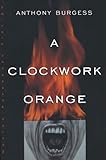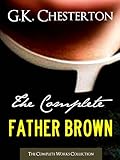Rightly so, all three appear in all genres of literature. Sometimes they are treated well. Sometimes they are not.
Because music subsists in a different medium, none but the most avant garde of authors attempts to describe it note-by-note. It is an easy and natural choice to attempt to describe music through the experience of listening, and the sentiments and emotions—even the physical responses—it provokes. This meets with mixed success, but this indirect approach is at the very least not guaranteed to fail. An author cannot, through words, convey the sound of music.
 In A Clockwork Orange, Anthony Burgess hedges his bets; he selects music that he knows than many of his readers will know, and that some of them will know well. In this way, he knows that at least some of them will be able to hear the actual sound of the music as they are reading it. But he also knows that many will not. So he also conveys the experience of listening, through the main character's (rather visceral) responses to the music, and even manages to convey the progression through different passages of the symphony. This is great writing not because (for most people) it succeeds; it is great writing because it tries.
In A Clockwork Orange, Anthony Burgess hedges his bets; he selects music that he knows than many of his readers will know, and that some of them will know well. In this way, he knows that at least some of them will be able to hear the actual sound of the music as they are reading it. But he also knows that many will not. So he also conveys the experience of listening, through the main character's (rather visceral) responses to the music, and even manages to convey the progression through different passages of the symphony. This is great writing not because (for most people) it succeeds; it is great writing because it tries.In The Poet Trap, I discussed the difficulty of convincing the reader that your protagonist is a great poet. It is as problematic to convey the experience of reading or listening to great poetry as it is of music, unless the author happens to be a great poet. It may not surprise you to learn from a literary critic and editor, that I know enough about the mechanics and techniques of great poetry to be able to imitate it if I really need to. But in a novel, that would only be of any use if my protagonist was a plagiarist or an imitator. If he is to be a great and original poet (which I am not), I will have to treat his poetry the way Burgess treats music.
I could, on demand, write a stirring battle song, or an elegy; these are formal and to some extent, formulaic. They also depend (or rely) for their impact on context; my elegy will move you if the events of the story around it are mournful or wistful; my battle song will raise your fighting spirit if the troops, enthusiastic, are preparing for their heroic charge.
But in either case, the reader can manage without the actual text of the poem if the author can carry the him along in the spirit and the experience.
Books generally describe fighting more often than they describe music, poetry or dance. I sometimes think there ought to be a Muse for fight choreographers. This would serve as a guide for all those writers in every genre who want their fights to go beyond the couple of blows that are usually enough in real life.
I was once a teenage boy, my feminist mother's efforts notwithstanding. I had a phase of geeky fascination with the differences between theatrical combat and real life combat (anything from a bar-room brawl to an epic battle). This has provided me with two possible approaches to editing fight scenes in literature. I can criticize my author's (almost) inevitable blow-by-blow accounts by telling them in what way what they have said is impossible*. I daresay I have browbeaten one or two of them with what is possible, what is superhuman, what is rule-of-cool. There's probably a blog post in there somewhere, but of rather restricted appeal.
OR, I can beg them, please, for heaven's sake, no blow-by-blow. Blow-by-blow is for boxing the enthusiast, listening to the fight on the radio (or, if you know your communications history, over the telephone).
Blow by blow can work if your book is specifically martial arts oriented. In this case, you still shouldn't describe each blow**, but instead employ, sparingly, technical terms; allow your adept to 'execute a skillful renzoku waza, but be caught out by his opponent's katsugi waza'. From time to time. By all means, in a martial arts oriented book, let the protagonist spend hours perfecting his tenchinage, and explain what it is in detail as this will serve to reinforce the protagonist's own dedication to his discipline.
BUT where fighting is integral but not central (the book has lots of fighting in it, but it is not about fighting), describing every blow has the effect of slowing down the action. It is well worth estimating, when you are writing a fight scene, how long the fighting actually took, and how long it took to read the description of the fighting. In a boxing match, the cadence*** is relatively slow; in an organized bareknuckle it is faster; in a sporting fencing match it goes in sudden fits; in a back-alley brawl it is very fast indeed, and usually over in five seconds or less; drunken bar-room brawls really can last almost as long as they do in the movies. This is because
But those shorter engagements need shorter descriptions. I do have a kind of rule of thumb. It is that if you are trying to write a realistic engagement, if it involves only two people and is neither sport nor theatre, it should be over in three blows or less****. In which case you can say, after it is over, what one or more of the blows were:
1.
I thought I'd take him by surprise but he know what I was and he saw me coming, and as I picked myself out of the the trashpile I berated myself for not expecting him to have a big right-hook.
2.
1 is an example I just wrote. 2. is from Jack Shilkaitis' upcoming novel Apostasy, slightly edited by me.
Longer engagements that seek realism are only longer because they involve more enemies. Unless you are describing a battle between two armies of Samurai, battlefield engagements involve everyone fighting everyone else.
 A sequence of engagements in rapid succession (let's imagine Robin Hood is escaping from Nottingham Castle and the alarm has been raised) can and will become really really dull if every single one is described, even if it is described as briefly as the examples above.
A sequence of engagements in rapid succession (let's imagine Robin Hood is escaping from Nottingham Castle and the alarm has been raised) can and will become really really dull if every single one is described, even if it is described as briefly as the examples above.
Longer engagements involving only two people don't happen in real life except when they don't really want to kill eachother (this happens more often than you might think). GK Chesterton deals with this very deftly when describing a rapier duel between determined but well-matched opponents. Father Brown (our hero) goes away and comes back during the fight, all the while hearing the clatter of rapiers.
I thought I'd take him by surprise but he know what I was and he saw me coming, and as I picked myself out of the the trashpile I berated myself for not expecting him to have a big right-hook.
2.
When Sharliise slapped the dagger off her neck it caught the soldier’s face, and he lost his hold on her long enough for her to get her boot dagger and thrust it into his gut repeatedly. After he stopped moving she stepped back and away, shaking.
Longer engagements that seek realism are only longer because they involve more enemies. Unless you are describing a battle between two armies of Samurai, battlefield engagements involve everyone fighting everyone else.
 A sequence of engagements in rapid succession (let's imagine Robin Hood is escaping from Nottingham Castle and the alarm has been raised) can and will become really really dull if every single one is described, even if it is described as briefly as the examples above.
A sequence of engagements in rapid succession (let's imagine Robin Hood is escaping from Nottingham Castle and the alarm has been raised) can and will become really really dull if every single one is described, even if it is described as briefly as the examples above.Longer engagements involving only two people don't happen in real life except when they don't really want to kill eachother (this happens more often than you might think). GK Chesterton deals with this very deftly when describing a rapier duel between determined but well-matched opponents. Father Brown (our hero) goes away and comes back during the fight, all the while hearing the clatter of rapiers.
SO I advise, encourage and exhort (gotta love that word) my writers to treat fight scenes like they would treat music and poetry and, especially, dance. Dance is the another art that is impossible to do justice in the written word. But you can say what it is like to watch; you can say what it is like to experience it (to do it yourself).
And you can use the same techniques you use to describe music, poetry and dance to describe fighting. And you should.
It goes to the way that we experience events; especially events that affect us emotionally, and events that provoke excitement. We don't experience fighting blow-by-blow. We experience the big hits, that we land or that land on us, but all the stuff in between; the feints, parries and glances; the sizing up and circling, we forget in the glorious or inglorious moment of the deciding blow. And a literary description of a fight has to FEEL that way.
___
* some of my authors are already familiar with the abbreviation abinamw – A BOW IS NOT A MELEE WEAPON
** the word 'blow' is rather special, as although it's origin is in a word for striking, and therefore attack, it was used to translate French, Spanish and Italian combat manuals which used the words coup, colpo. This word does not always mean an attack, and quite often suggests a ploy or gambit, offensive or defensive.
*** average rate at which offensive blows are delivered
**** yes, "less". No, I won't lower myself to that particular debate. YKWYA

No comments:
Post a Comment